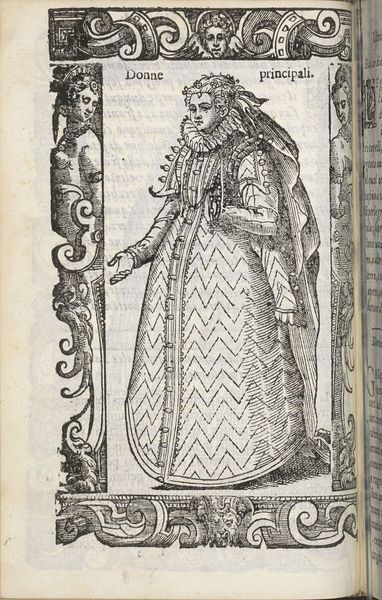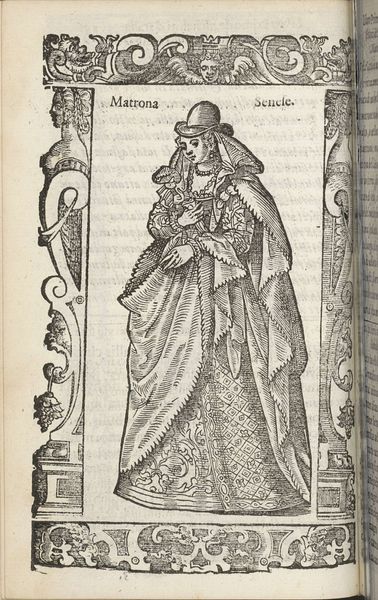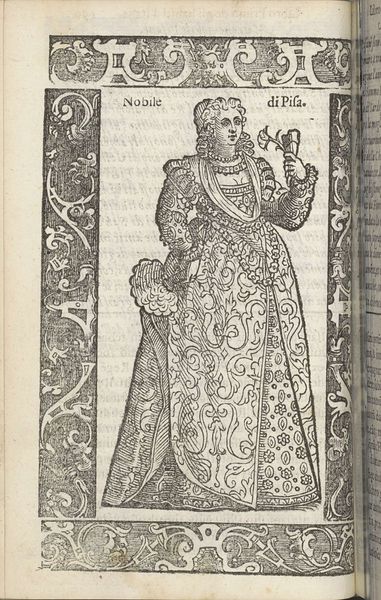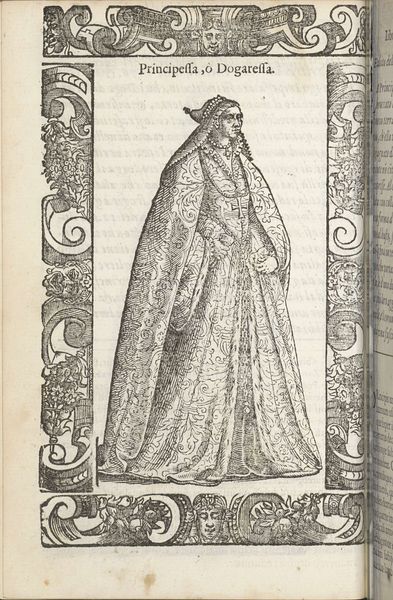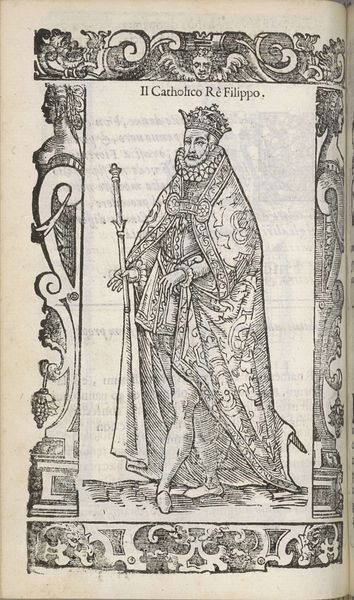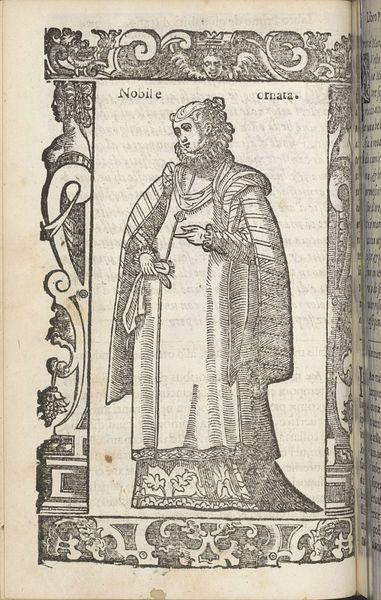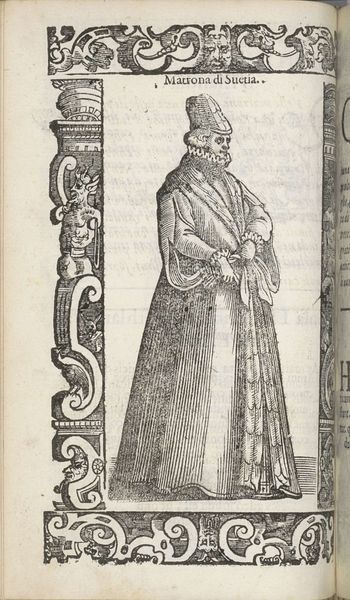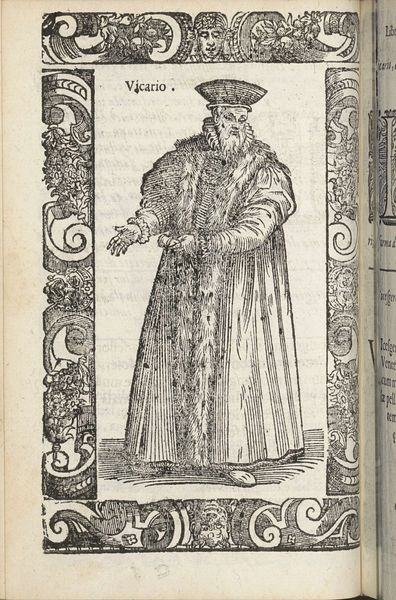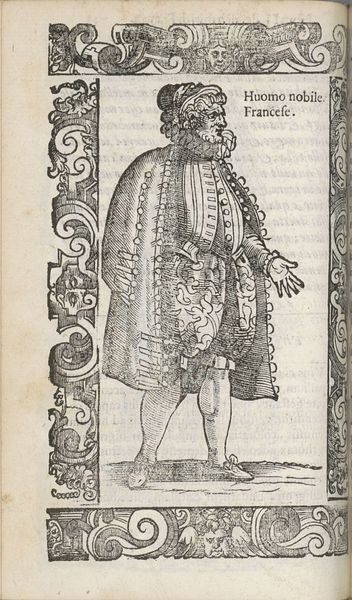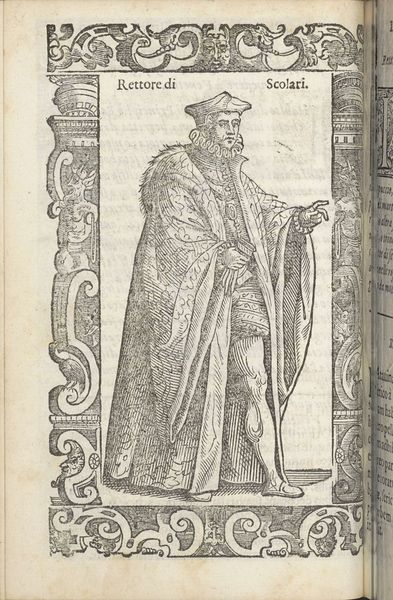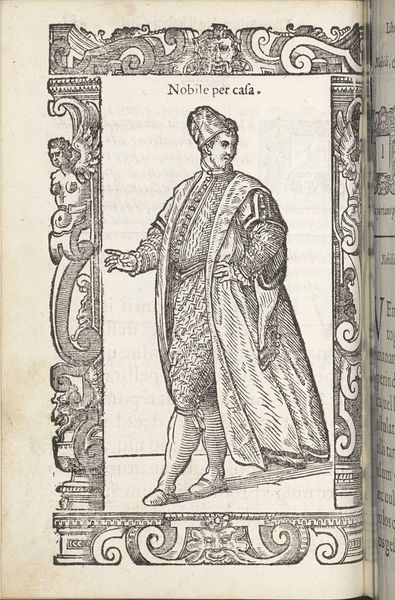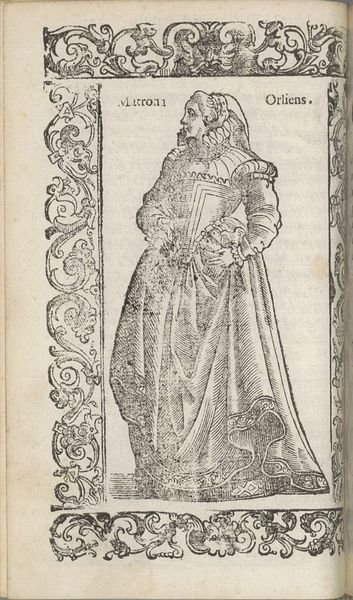
print, engraving
#
portrait
#
medieval
# print
#
mannerism
#
history-painting
#
engraving
Dimensions: height 167 mm, width 125 mm
Copyright: Rijks Museum: Open Domain
Curator: This engraving, "Duca di Firenza," crafted by Christoph Krieger around 1598, captures a figure of notable authority. Its stark black and white print gives it an immediacy that belies its age. Editor: The overall feel is undeniably rigid. His crown and sceptre immediately convey power, yet something about the Duke’s static pose and fixed expression renders the portrait almost mournful. What's your take? Curator: Well, engravings at this time involved a laborious process. Each line is etched into a metal plate. Think about the material constraints that shape this aesthetic—the pressure needed, the specific tools, the printing press itself! These choices reflect a deliberate distancing from painting's immediacy. Editor: That's fascinating from a maker's perspective. But I wonder, about the visual language employed? Crowns often symbolise divine right, while the fur trimmed cloak may imply luxury, however the lines create an impression of an almost otherworldly sadness, quite intriguing. Curator: Beyond symbolism, consider the socio-economic context! These printed images allowed for the widespread dissemination of power. The Duca's likeness could be multiplied and distributed, solidifying his image of authority amongst the masses through commodity production. It's power through reproducible means! Editor: Perhaps this is tied with the evolution of the idea of 'divine right' as the need to project that very image increases. I see the work also evokes visual tropes from both the Medieval and Mannerist movements - particularly its decorative aspects. The frame seems overflowing with motifs... a kind of visual density common for the era. Curator: Agreed. The ornamental frame emphasizes a culture obsessed with decoration and ostentation. This print wouldn't exist without skilled labor—the etchers, the printers, all playing a crucial part in distributing an aristocratic agenda through very precise work. Editor: So true; when looking at it through the lens of its original readership, we realise these carefully cultivated images served as cultural anchors for the era, constantly reaffirming established power structures, and embedding that culture through material means and in visual symbols. It's quite complex! Curator: Exactly. Understanding its context makes the image far more vibrant and unsettling! Editor: And through discussing it, even now! Thanks for sharing such unique angles.
Comments
No comments
Be the first to comment and join the conversation on the ultimate creative platform.
